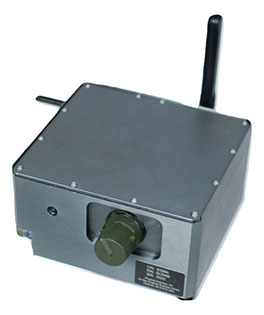Newsletter
PSI’s Detection Systems Enterprise develops advanced chemical and radiation detection technologies with core thrusts in 1) sensor system development based on strong phenomenological understanding of signature generation, and 2) detection, identification and data fusion algorithms for specific applications that exploit knowledge of sensor systems.
The advanced algorithm development capability within Detection Systems is primarily focused on improving detection and identification of Chemical, Biological, Radiological, Nuclear, Explosives (CBRNE) threats in low signal to clutter conditions. For example, as part of DARPA’s SIGMA program, our novel Poisson Clutter Split (PCS) algorithm is helping to revolutionize detection and deterrent capabilities for countering nuclear terrorism. PCS-derived technologies have followed a successful transition strategy and PCS is now fully integrated with several commercially available systems as highlighted below.
PERM – PCS Enabled Radiation Monitor
PSI’s PERM™ detector technology is based on 2″x4″x16″ NaI scintillators and is used in multiple applications, including static emplacements as part of the SIGMA sensor network. The PERM design maximizes the performance of the PCS algorithm to provide real-time (1 Hz) isotope identification, enhanced sensitivity and a significant reduction in operational false alarm rates. (More information on PERM)

PSI’s PERM detector
Mobile Urban Radiation Search (MURS) system
MURS is an advanced mobile radiation detection, identification and source localization system coupled with day/night contextual imaging and inertial navigation subsystems discreetly contained in an SUV. MURS provides real-time actionable information in complex urban environments. It can be used as a search system for continuously monitoring, intercepting and localizing radiological and nuclear threats. PSI has recently delivered five MURS units to UK Home Office OSCT (Office for Security and Counter-Terrorism) and is in the process of producing additional systems for various U.S. customers. (More information on MURS)

MURS – Mobile Urban Radiation Search
PERM-Mobile Detection System
PERM-Mobile is an advanced radiation detection and source identification system that can be easily configured for mobile and static applications. The system enables rapid vehicle integration with power provided through the 12V vehicle supply. The system can be configured as an “all-in-one” package with the addition of neutron detectors. In a vehicle configuration, PERM Mobile system provides left/right directionality for source encounters. The system can also be configured as a standalone portal in under 15 minutes using the same mounting equipment as vehicle installation. (More information on PERM-Mobile Detection System).

D3S-ID Detector
D3S-ID incorporates PSI’s adaptation of the PCS algorithm to operate with Kromek’s D3S detector on an Android smart phone. This technology was recently featured in a Popular Mechanics article: “This Tiny Device Can Detect Nuclear Armageddon” by Dan Dubno, April 25 2019.

Kromek’s D3S Detector
ChemSIGMA Sensor Network
In addition to radiation detection technologies, recent efforts in Detection Systems have resulted in the development of new chemical threat detection capability. The ChemSIGMA sensor network employs the SIGMA architecture to provide persistent wide-area monitoring of chemical warfare agents and toxic industrial chemicals.

SIGMA Chemical Recon and Meteorology (SCRAM)
The system has already been demonstrated in several DARPA field trials and is planned to be operationally deployed in new locations over the upcoming months (DARPA Tests Advanced Chemical Sensors). The ChemSIGMA network was also recently featured in a Popular Mechanics article: “How We’ll Stop Chemical Attacks” by Dan Dubno, April 28 2019. (More information on ChemSIGMA Network)
Contract News
PSI recently received the following research contracts:
“Multimodal Endoscopic Probe for Inner Ear Hearing Loss Diagnosis” from the National Institutes of Health
“Intensity-Dependent Infrared Blocking Filter for Source Exclusion” from the U.S. Air Force
“Controlled Porosity and Surface Coatings for Advanced Gas Diffusion Layers” from the Department of Energy.
Also in the news:
“Autonomous Vehicles, Artificial Intelligence and Automated Laboratories – Are You Ready for Lab Samples to be Delivered by Drones?” Hudson Robotics Inc. announced a collaboration with Physical Sciences Inc. (PSI) to bring drone technology to life science laboratories for sample handling.
For more PSI news, visit www.psicorp.com/news




